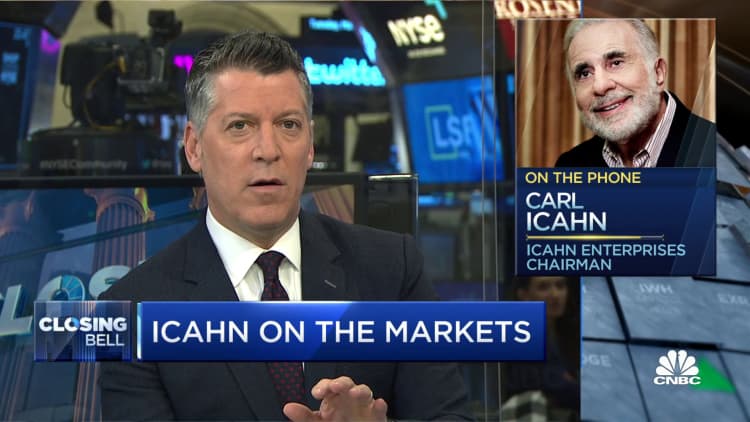When it comes to dividend investing, knowing which dividend stocks to sell can be more important than knowing which dividend stocks to buy. Buying stocks for income/yield can oftentimes be like trying to pick up pennies in front of a steamroller. Given how stocks bought primarily for their dividend can tank upon news of a dividend cut/suspension, capital losses from one “dividend trap” can have a tremendous impact on the total returns from a dividend-focused portfolio. To some extent, this is due to high-yield dividend stocks becoming overvalued. With investors pricing them based on yield when they have a high payout, any reduction/elimination of the dividend typically results in a severe de-rating, as fundamentals come off the back burner.
That’s the risk at hand here with these seven dividend stocks to sell. Punching above their weight thanks to a currently-high rate of payout (5% or more), the risk of a dividend cut far outweighs potential gains.
| BGS | B&G Foods | $14.80 |
| BIG | Big Lots | $10.52 |
| CCOI | Cogent Communications | $61.17 |
| FAT | FAT Brands | $7.22 |
| PETS | Petmed Express | $16.41 |
| TDS | Telephone & Data Systems | $9.92 |
| VIA | Via Renewables | $21.03 |
B&G Foods (BGS)

Source: Shutterstock
B&G Foods (NYSE:BGS) may not be a household name, yet its portfolio of packaged and processed food brands are well-known. B&G’s brands include baking products such as Clabber Girl and Crisco, condiments like Ortega taco sauce, and seasonings like Mrs. Dash.
Amongst investors, BGS stock may be best known for its high-yield dividend. Shares currently sport a forward yield of 5.08%. However, with its payout ratio (dividends as a percentage of earnings) coming in at 144.2%, this payout does not appear sustainable.
Even as B&G has already slashed its quarterly payout last year, from 47.5 cents to 19 cents, another trimming may be in store. A well-received quarterly earnings report has provided BGS, hammered during 2022, a bit of a boost recently. If you already hold this poor-performing dividend stock, now may be the time to cash out.
Big Lots (BIG)

Source: Shutterstock
If one were to rank the dividend stocks to sell ahead of a likely dividend suspension, Big Lots (NYSE:BIG) would be at or near the top of that list. Shares in the big box retailer may be down by nearly 71% over the past 12 months, but some investors may still be buying it for its super-high dividend yield.
Currently, the BIG stock offers a forward yield of 10.82%. However, with the company reporting a net loss of $7.30 per share, and expected to stay in the red through the current fiscal year (ending Jan. 2024) and the next, it’s highly questionable whether this high rate of payout will continue for long. Although it may seem as if the dividend-cut risk is already priced-in, shares would likely experience some sort of decline upon a dividend-cut announcement. With this, consider it wise to simply sell/stay away from BIG.
Cogent Communications (CCOI)

Source: Shutterstock
Last July, I argued that Cogent Communications (NASDAQ:CCOI) was one of the top dividend stocks to sell. All thanks to the fact that this telecom company was paying out dividends in excess of its operating cash flow minus capital expenditures. At the time, these payouts did not seem sustainable. Flashing forward to today, not only has CCOI continued to pay high dividends; its quarterly payout has continued to increase. CCOI stock is also up slightly compared to where shares were trading when I first went bearish on shares.
Nevertheless, you may not want to wager that Cogent’s high payout gambit continues indefinitely. The company’s operating cash flow has largely stayed the same in recent quarters, as have its capital expenditure requirements. Likely a key factor in propping up the stock, if it becomes necessary to slash the dividend, it could result in a big sell-off.
FAT Brands (FAT)

Source: Shutterstock
The corporate name of FAT Brands (NASDAQ:FAT) is in reference to one of the main restaurant franchises in its portfolio, Fatburger. However, you can argue as well that this name is also apt in describing FAT’s dividend policy.
The FAT stock pays investors with quarterly dividends totaling 56 cents per share annually. At current prices, this gives FAT a hefty forward dividend yield of 7.66%. Yet besides the fact that FAT has dropped in price by a greater amount (nearly 16%) over the past twelve months, this yield may not be sustainable. It’s not merely a matter of FAT Brands paying out all of its profits to shareholders in the form of dividends. Generating negative operating cash flow, FAT has been essentially borrowing in order to make these payouts. With the forthcoming exit of its CEO (who is under federal investigation), there’s even more reason to steer clear.
Petmed Express (PETS)

Source: Shutterstock
Petmed Express (NASDAQ:PETS) may still seem to some as a high-yield dividend stock worthy of a buy. In large part, due to the pet pharmacy operator’s 13-year track record of dividend growth. Over the past five years, PETS has raised its dividend by an average of 7.14% annually. But it does not matter how many times you say to yourself, “a raised dividend is a safe dividend;” with PETS stock, dividend trap risk runs high. As with Cogent, this is another example of a company paying out all available operating cash flow out as dividends.
With the company reporting revenue and adjusted EBITDA declines during the preceding quarter, operating results do not seem to be keeping up with dividend growth. PetMeds’ poor fiscal performance may also signal that its partnership with telehealth company Vester isn’t doing much to move the overall needle growth-wise.
Telephone & Data Systems (TDS)

Source: Shutterstock
Telephone & Data Systems (NYSE:TDS) is a regional telecom company, but its main asset and cash cow is its 84% stake in wireless provider United States Cellular (NYSE:USM).
While USM stock does not pay a dividend, TDS stock offers a high yield to its investors. Shares today sport a forward yield of 7.21%. Not only that, TDS is technically within two years of achieving “dividend king” status, as it has raised its payout 48 years in a row. Although this may make it seem like one of the safer high-yielders, a closer look suggests otherwise.
As a Seeking Alpha commentator recently argued, TDS’s wireless unit is struggling to compete with its larger rivals. Already paying out dividends well in excess of its earnings, this would be “king” could soon be out of the running for the crown. This makes TDS one of the dividend stocks to sell.
Via Renewables (VIA)

Source: Shutterstock
While Via Renewables (NASDAQ:VIA) may sound like a solar or hydrogen energy startup, in actuality this company is merely an independent retail energy company that used to go by the name of Spark Energy.
While the company has not yet released official results, Via’s preliminary net income figure for the full year 2022 ($11.2 million), while better than last year’s figure ($5.2 million) is still well below the $29.8 million in net income reported two years back. Despite its worsening fiscal performance, VIA has maintained its dividend.
With its split-adjusted drop in price over the past year, this has resulted in VIA stock becoming a high-yielder, with a forward yield of around 13.7%. Although the company has not signaled it plans to reduce/eliminate this payout anytime soon, if poor operating results persist, it appears very likely that this will happen.
On the date of publication, Thomas Niel did not hold (either directly or indirectly) any positions in the securities mentioned in this article. The opinions expressed in this article are those of the writer, subject to the InvestorPlace.com Publishing Guidelines.

















